Plants that Thrive in Clay Soils
There are many plants that thrive in clay soils. You may already have some in your garden. Plants such as false indigo plants, coneflowers, black-eyed Susans, tickseed, and Russian Sage are just a few.
Clay soil can be challenging to garden in. As a quick soil test, pick up a handful of soil and squeeze it tight. If the soil remains sticky and clings together in a ball, the soil has a high level of clay. Soil that readily falls apart and light weight is silt or sandy soil.
WHAT IS CLAY SOIL?
Clay soil is mostly clay and silt. The particles are small and cling together which holds some water along with the clay’s rich nutrients. This tight structure leads to compaction. Soil compaction retains water and nutrients while preventing the excess water from draining. The appearance of clay soil is sticky and brown in color that balls up in large size, heavy clumps. You will notice that clay soil clings to garden gloves, tools and garden boots. It has a slippery feel to it. It is impossible to shake loose. When working with clay soil it is extremely heavy to dig or break into. I have broken a few garden tools attempting to “break into” clay soil. And have had a few sore muscles afterwards.
Heavy clay soil texture can hinder plant roots from reaching nutrients and moisture locked within the clay soil. And conversely clay soil that retains too much water also prevents water from draining away from the plant’s roots. If water is not drained from plants, shrubs, or trees, the plant will suffer from excessive water retention. Excess garden water and rainfall needs to drain away from the plant roots. To remedy this problem, add sphagnum peat moss, garden gypsum, compost or organic material to the clay soil. Mix it with the clay soil to begin breaking it down.
We have listed some plants that will thrive in clay soils. Plants with tough roots that can penetrate clay soil and flourish. Take a look at our list of plants.
1. Baptisia
Baptisia is also known as False Indigo plants and Wild Indigo. A Spring blooming North American native blooms in blue, white, and yellow. Foliage is blue green with spires of lupine-like flowers. Black seed pods appear from the old blooms.
Decadence Blueberry Sundae Baptisia
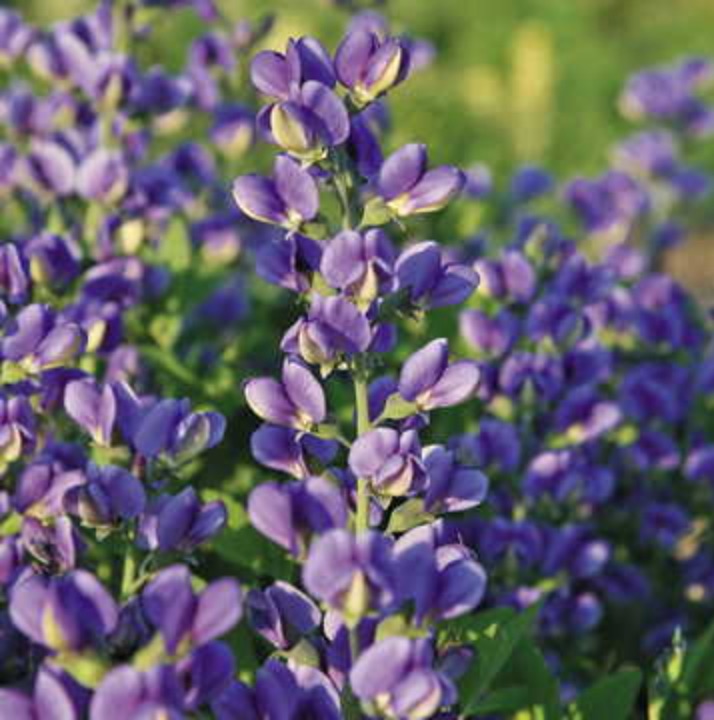
Flowers are deep indigo blue. Decadence Blueberry Sundae Baptisia grows in zones 4 to 9 in part shade and sun to full Sun. Reaches 3 feet tall. Blooms late Spring to early Summer. Ornamental seed pods appear after blooms are done.
Sparkling Sapphires Baptisia
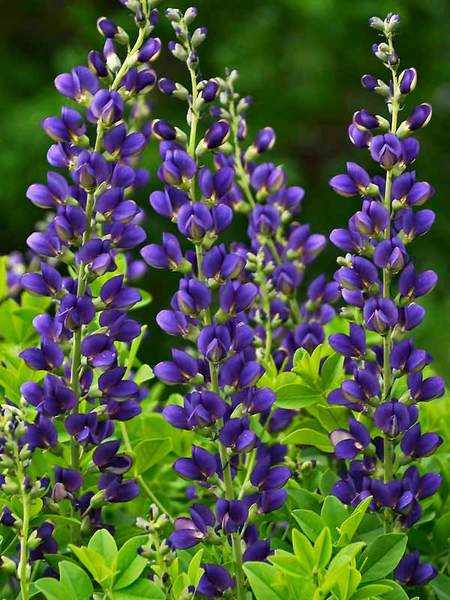
Grows in zone 4 to 9 in mostly Sunny to full Sun. Sparkling Sapphires reaches 30 to 36 inches tall. Indigo blue flowers appear late Spring to early Summer. Attract butterflies and resistant to deer. Tolerant of humidity and seaside salt conditions. Charcoal hued seed pods develop after flowering.
2. Rudbeckia
Rudbeckia is also known as black-eyed Susan. Tough perennial and sought after by wildlife for nectar and seeds.
Little Goldstar Rudbeckia
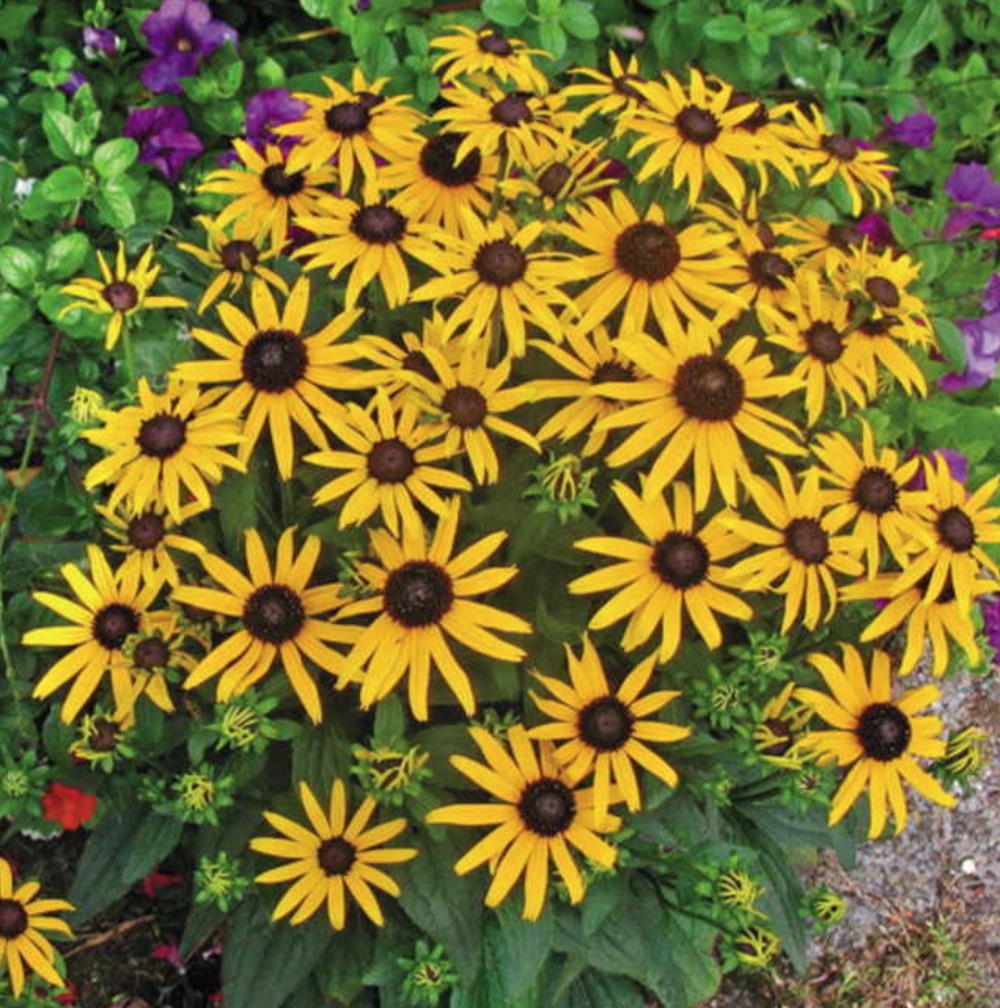
Blooms of dark yellow gold appear from midSummer until Fall. Grows in zones 4 to 10 in full Sun. Little Goldstar reaches 14 to 16 inches high and wide. Attracts bees and butterflies. Cold hardy perennial tolerant of heat, humidity, and drought conditions once established.
Cherry Brandy Rudbeckia Plant
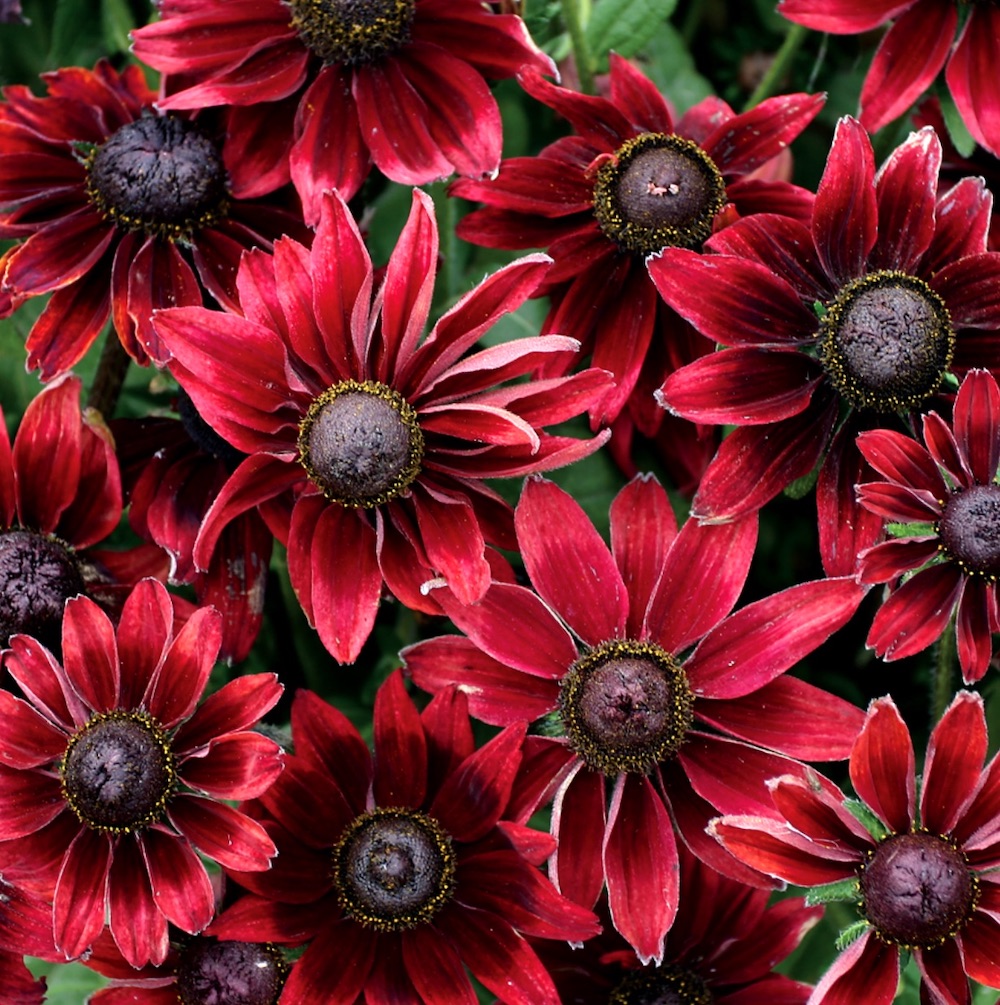
Blooms are rich shades of dark red and maroon with a big black eye. Grows in zones 5 to 9 in full Sun. Cherry Brandy Rudbeckia reaches 2 feet tall. Attracts bees and butterflies. Tolerant of clay soil conditions. Tolerates heat, humidity, and drought conditions, once established.
3. Coreopsis
Coreopsis is also known as tickseed. Blooms in shades of yellow, orange, red, and maroon. No more than knee-high in height.
Enchanted Red Coreopsis
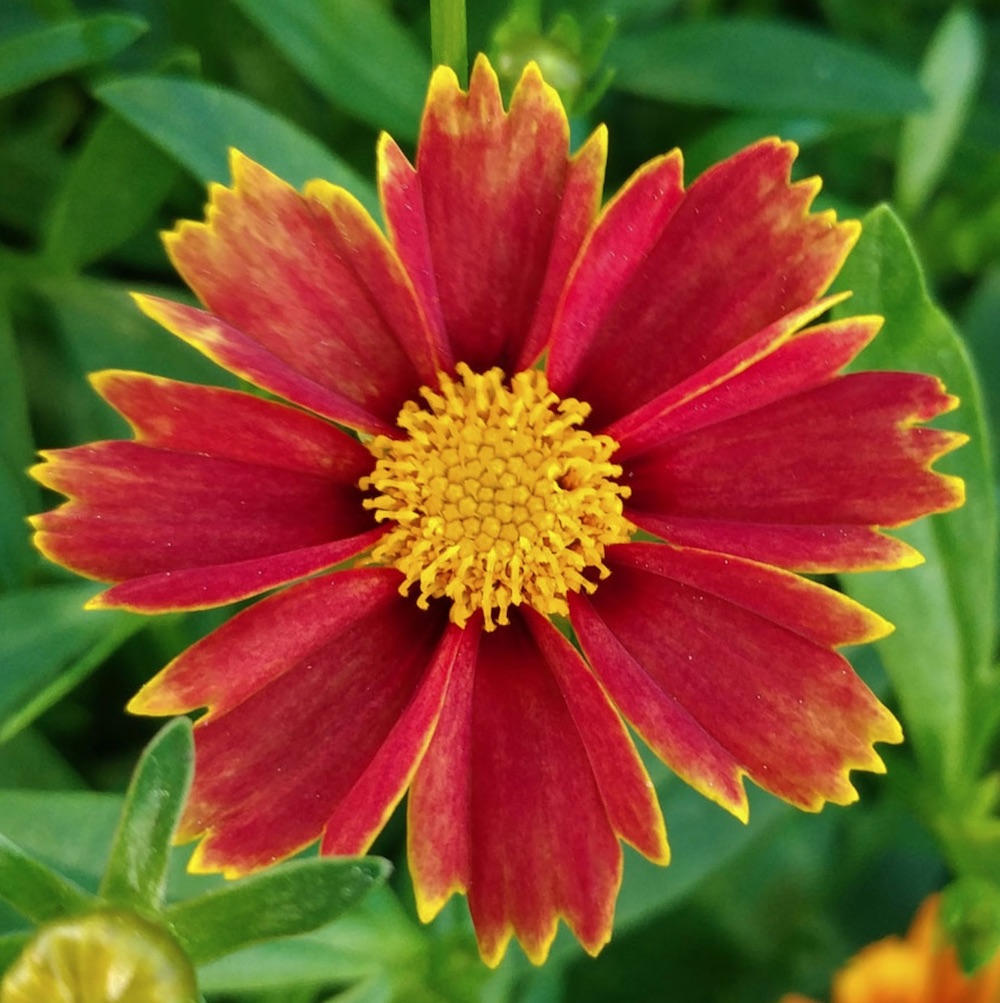
Grows in zones 5 to 9 in full Sun. Enchanted Red reaches 15 to 18 inches tall with a spread 2 to 3 feet wide. Bold red blooms from early Summer to early Fall. Cold hardy perennial that is tolerant of heat, humidity, and drought conditions once established. Another beauty from breeder Darrell Probst’s amazing Big Bang series.
Sunswirl Coreopsis
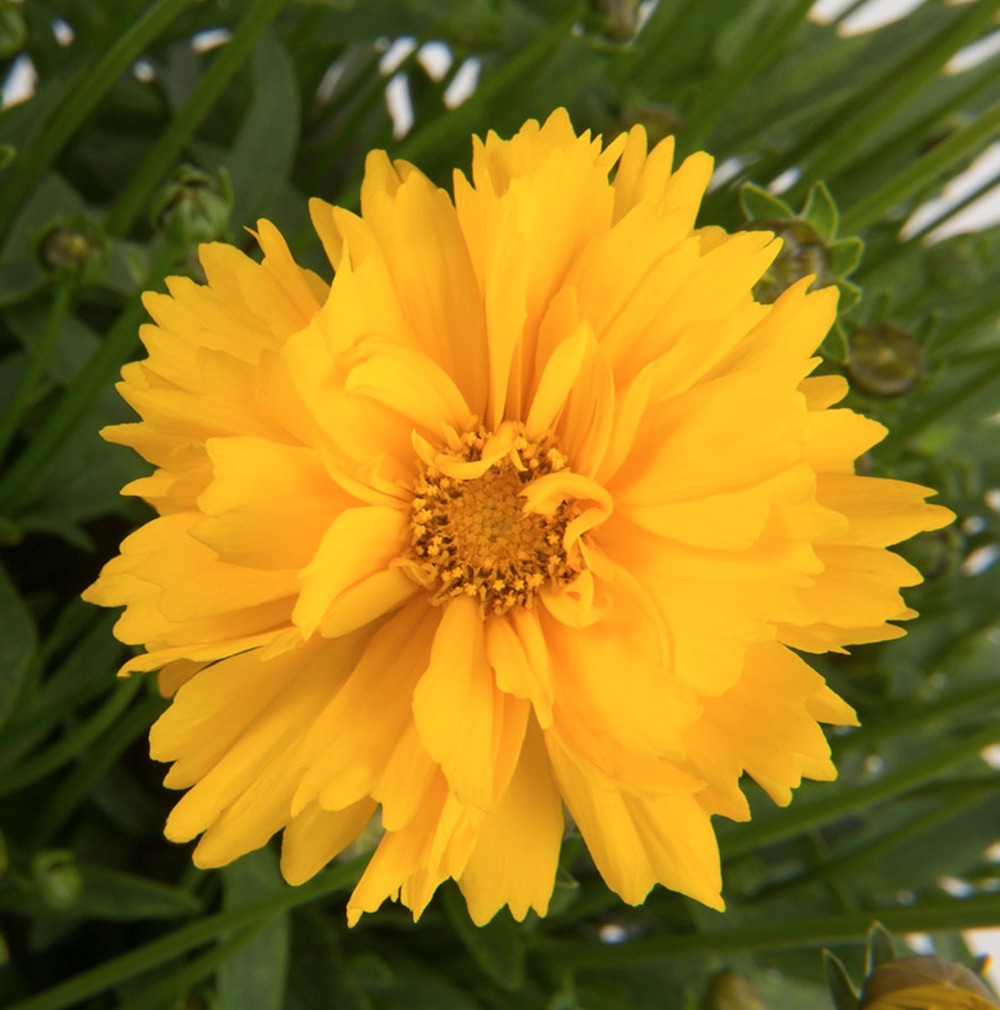
Sunshine semi-double golden yellow blooms appear over dark green foliage. Sunswirl Coreopsis attracts butterflies and pollinators. Resistant to Deer. Grows in zones 4 to 9 in full Sun. Reaches 18 to 30 inches tall. Tolerant of drought conditions once established.
4. Perovskia – Plants that Thrive in Clay Soils
Perovskia is also known as Russian Sage. Blooms are blue purple floral spikes on silver green lacy foliage. Sun loving perennial that blooms from Summer to Fall. Attracts bees, butterflies, and hummingbirds.
Blue Jean Baby Perovskia
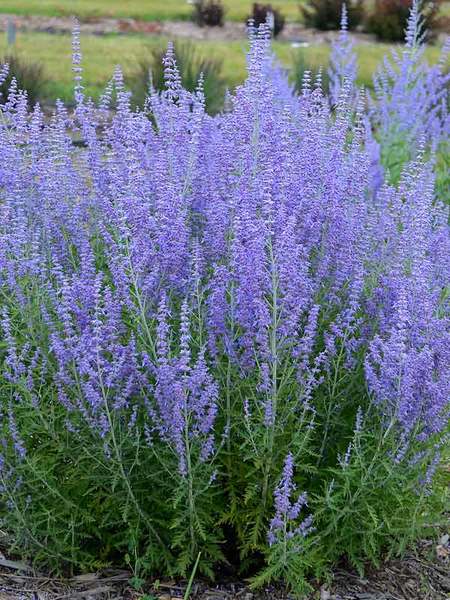
Lavender blue blooms appear from mid-Summer through mid-Fall. Foliage is an aromatic gray green silver color. Blue Jean Baby is a fragrant perennial. Grows in zones 4 to 9 in full Sun. Reaches 28 to 34 inches tall. Beneficial for pollinators and resistant to both deer and rabbit. Tolerant of heat, hot dry sites, seaside salt, and drought conditions once established. Plant on a slope or bank.
Denim ‘n Lace Russian Sage
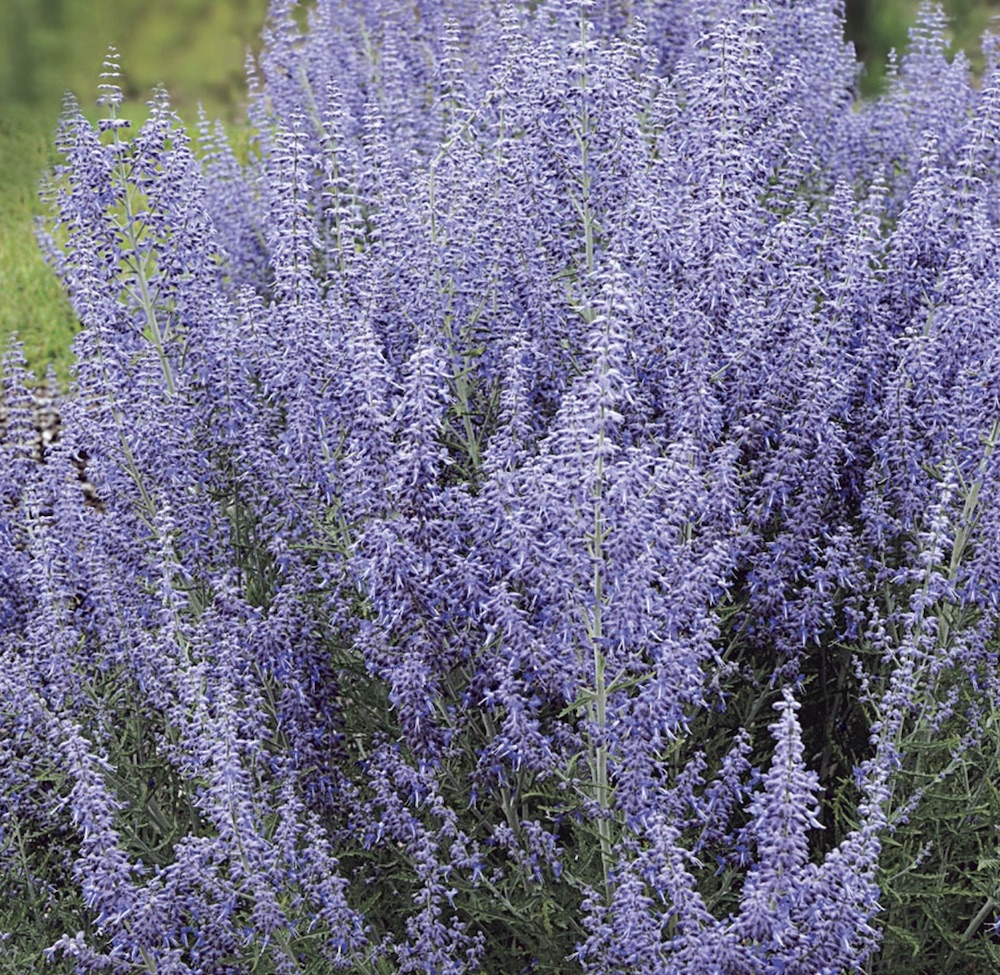
Blooms are blue to light purple with highly scented foliage. Grows in zones 4 to 9 in full Sun. Reaches 28 to 32 inches tall. Denim ‘n Lace blooms from midSummer until mid Fall. Attracts hummingbirds and resistant to deer. Cold hardy perennial that is tolerant of heat and drought conditions once established.
5. Achillea
Achillea is also known as yarrow. Sun loving yarrow blooms from late Spring until mid Summer. Bloom colors range from white to pink, red and yellow.
Cherries Jubilee Achillea
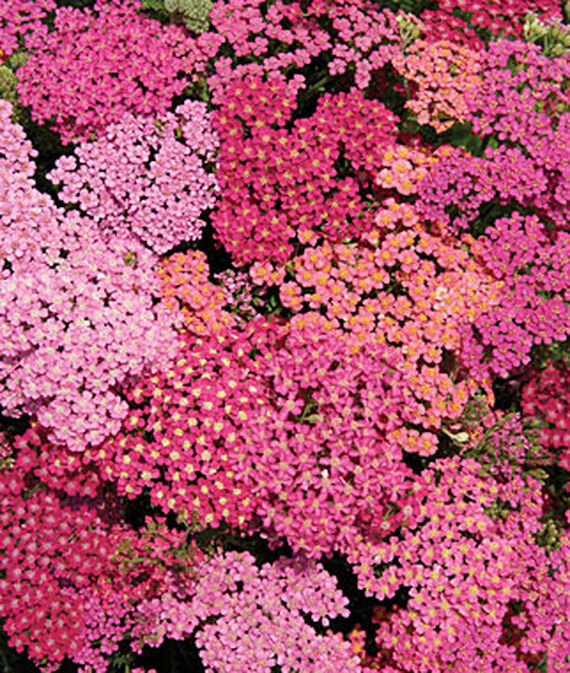
Grows in zones 5 to 8 in full Sun. Reaches 24 to 28 inches tall. Cherries Jubilee has shades of bright reds, roses and violet blooms. Blooms Spring and Summer. Once established, drought tolerant. Deer resistant. Use as cut flowers.
Moon Dust Achillea
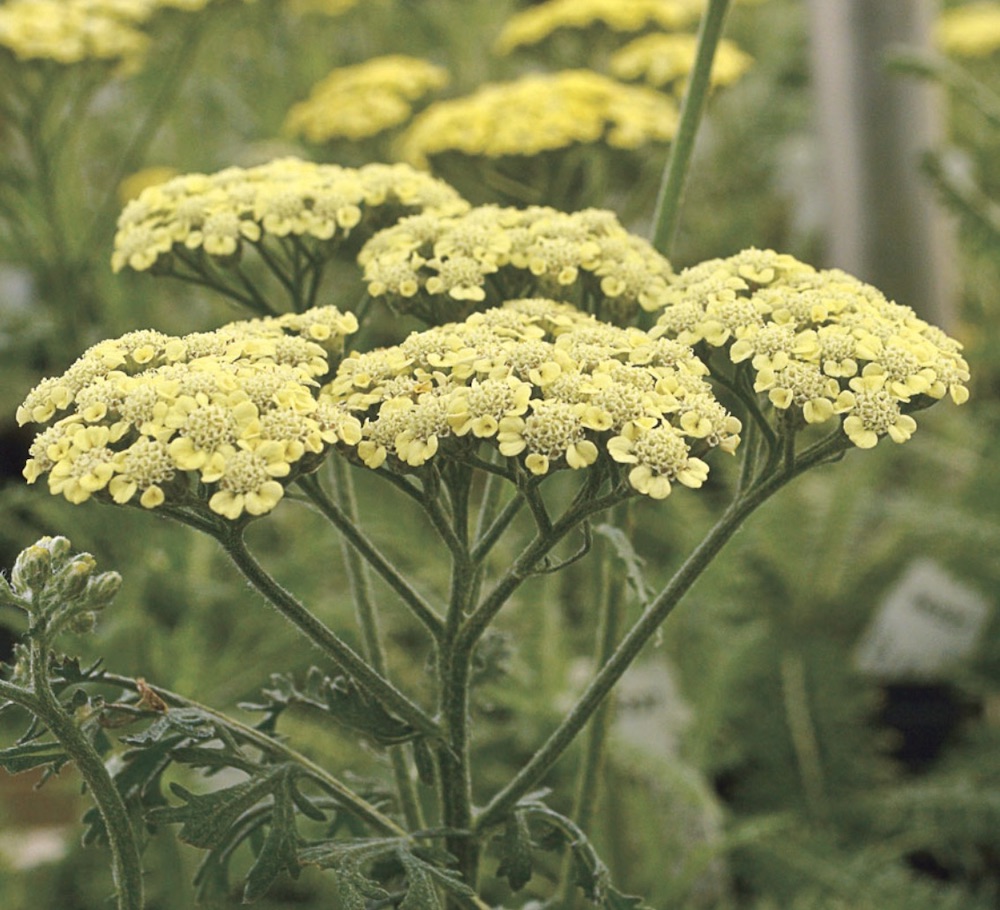
Grows in zones 5 to 8 in full Sun. Reaches 12 to 14 inches tall. Blooms early Summer until Autumn. Flat topped creamy pale yellow blooms appear on Moon Dust from early Summer through early Fall. Silvery green foliage attracts bees and butterflies. And attracts beneficial insects.
6. Iris – Plants that Thrive in Clay Soil
Iris do well in clay soils. Sun loving irises bloom in Spring and Summer. Available in a variety of rich bold colors.
Contrast in Styles Iris
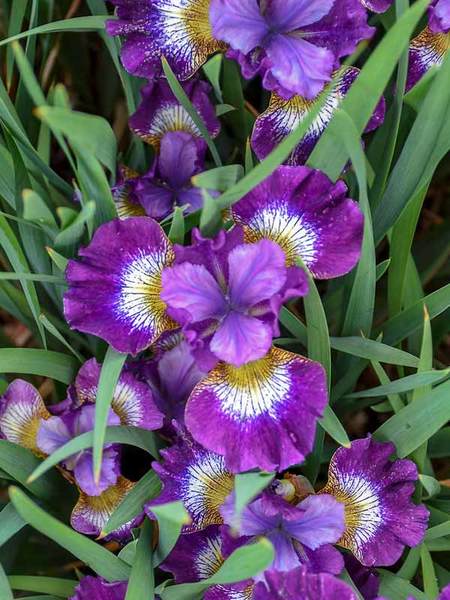
Narrow stems with sword-like foliage. Contrast in Styles Iris is also known as a Siberian Iris. Blooms are purple with white accent from late Spring until early Summer. Grows in zones 3 to 9 in mostly shade to full Sun. Reaches 28 to 34 inches tall. Tolerates normal, clay, and acidic soil conditions. Attracts hummingbirds and deer resistant. Tolerant of shade, humidity, and wet site garden conditions.
Concord Crush Iris
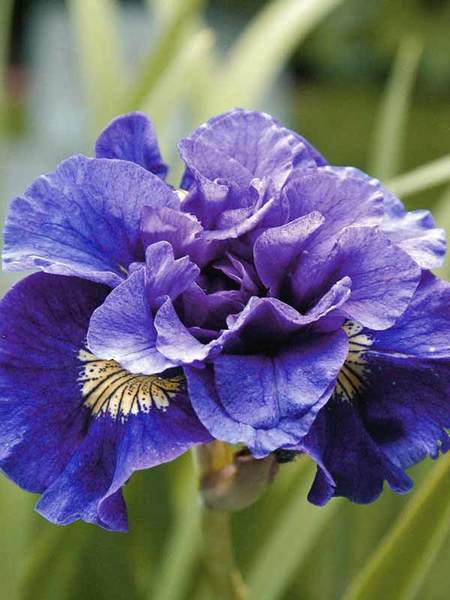
Blooms are violet-blue ruffled with glowing yellow signals from late Spring until early Summer. Muti-petaled flowers with lavish layers of petals. Concord Crush grows in zones 3 to 9 in mostly shade to full Sun. Reaches 24 to 36 inches tall. Tolerates normal, clay, or acidic soil conditions. Attracts hummingbirds and deer resistant. Tolerant of shade, humidity, and wet site garden conditions.
Well Endowed Bearded Iris
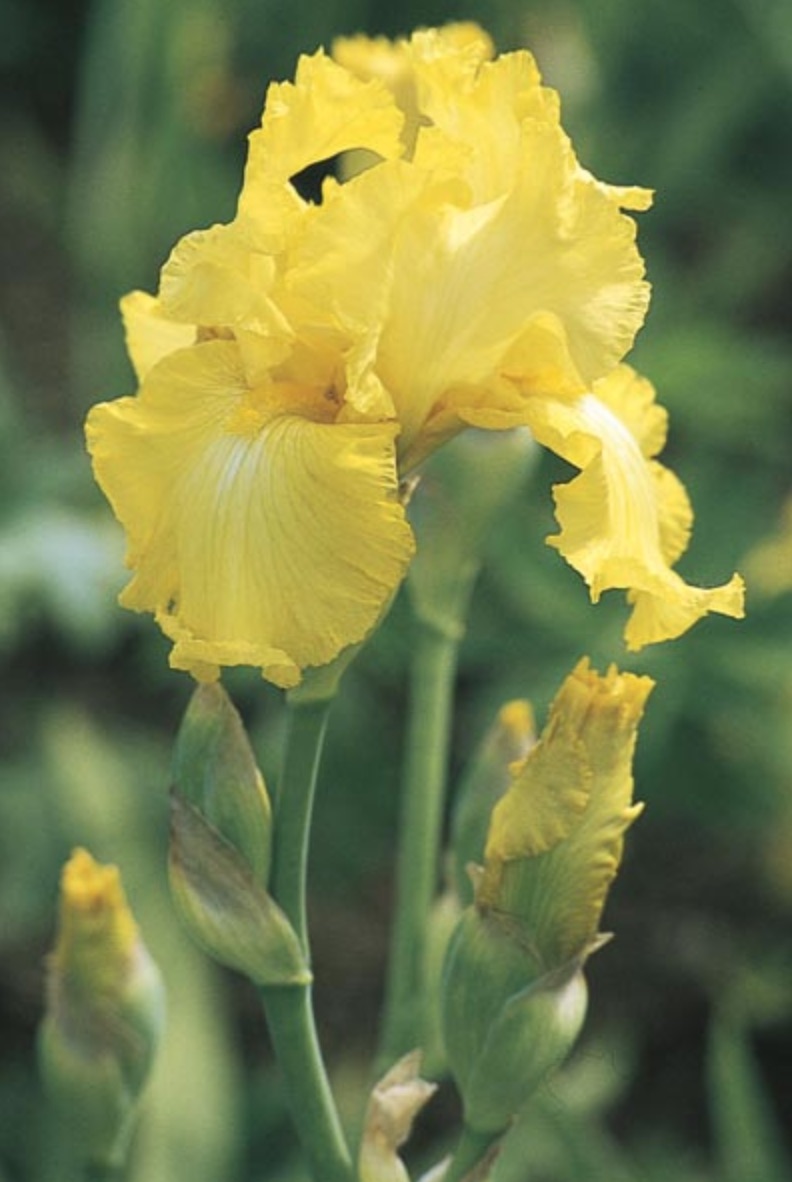
Spring and Fall blooming, Well Endowed can be used as cut flowers. Grows in zones 3 to 9 in part Sun to full Sun. Reaches 30 to 40 inches tall. Large fragrant golden yellow blooms have white highlights
7. Monarda
Monarda is also known as Bee Balm, Bergamot, and Oswego Tea. Blooms are scarlet red, pink, and purple shades. Crown-shaped flowers attract bees, butterflies and hummingbirds. North American native from the mint family.
Balmy Rose Monarda
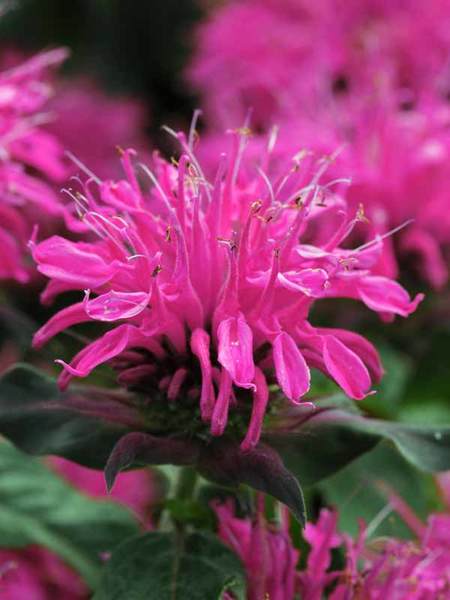
Rose pink flowers appear on Balmy Rose Monarda. Grows in zones 4 to 9 in mostly sunny to full Sun. Reaches 10 to 12 inches tall. Blooms late Spring to mid Summer. Tolerates normal and clay soil conditions. Beneficial for Pollinators and attracts butterflies and hummingbirds. Resistant to deer and rabbits. Tolerant of wet site conditions.
Balmy Purple Monarda
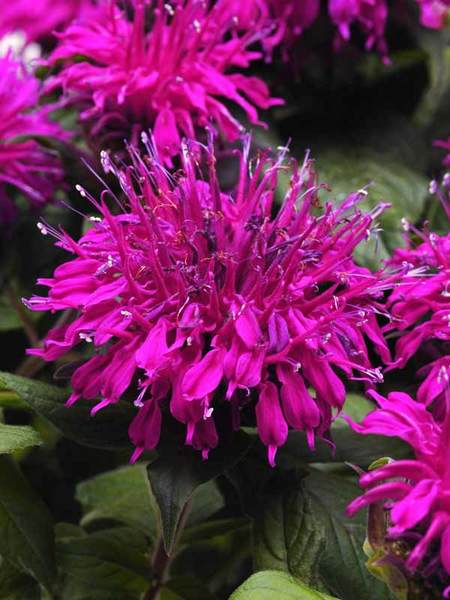
A bold spiky whorled violet-purple blooms appear on Balmy Purple Monarda. Grows in zones 4 to 9 in mostly sunny to full Sun. Reaches 10 to 12 inches tall. Blooms late Spring to mid Summer. Tolerates normal and clay soil conditions. Beneficial for Pollinators, and attracts butterflies and hummingbirds. Resistant to deer and rabbits. Tolerant of wet site conditions.
8. Echinacea – Plants that Thrive in Clay Soils
Echinacea is also known as coneflower. A sun loving perennial with blooms of white, cream, yellow, purple, pink, orange, and lime shades. Summer blooming echinacea that attracts butterflies and birds.
Marry Me Echinacea

Grows in zones 3 to 8 in full Sun. Marry Me Echinacea reaches 18 to 24 inches tall. Blooms Summer to Fall. Both deer and rabbit resistant. Cold hardy perennial that tolerates heat.
Sombrero Lemon Yellow Echinacea
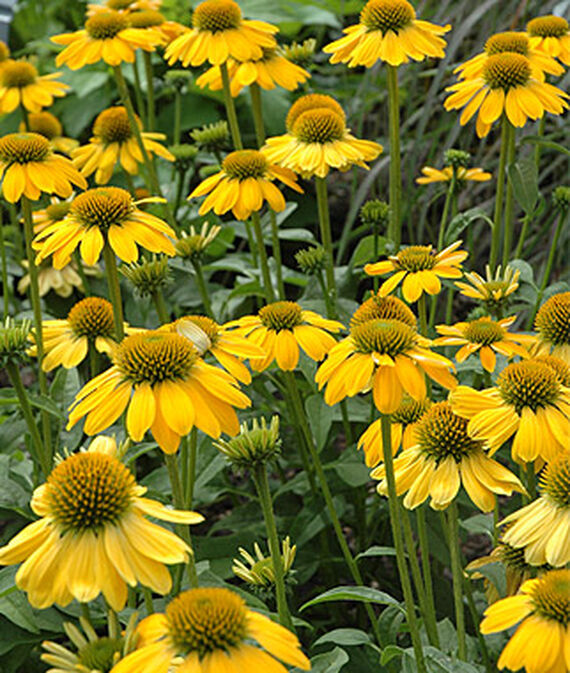
Blooms of vivid lemon yellow appear from midSummer until frost. Sombrero Lemon Yellow Echinacea grows in zones 4 to 9 in full Sun. Reaches 18 to 20 inches tall. Tolerant of heat, humidity, poor, and drought soil conditions once established. Resistant to deer and rabbits.
Sombrero Adobe Orange Echinacea
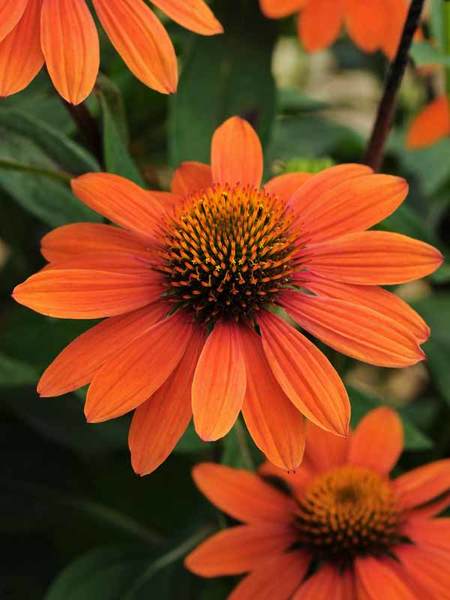
Toasty orange flowers with orange bronzed cones appear on Sombrero Adobe Orange Echinacea. Grows in zones 4 to 9 in mostly sunny to full Sun gardens. Reaches 18 to 20 inches tall. Blooms appear from early to late Summer. Tolerates normal and clay soil conditions. Resistant to deer. Beneficial for pollinators and attracts butterflies. Tolerant of hot dry site and humidity conditions. Compact plant for containers.
9. Aster
Aster is also known as New England Aster. Blooms range from blue, purple, pink, red and white. Sun loving perennial that blooms from Summer into Fall.
Purple Dome Aster

Purple Dome Aster has purple flowers with bright yellow centers. Grows in zones 4 to 9 in part shade and part Sun to full Sun. Reaches 18 inches tall. Fall blooming North American native that is resistant to deer. Attracts butterflies.
Alma Potschke Aster
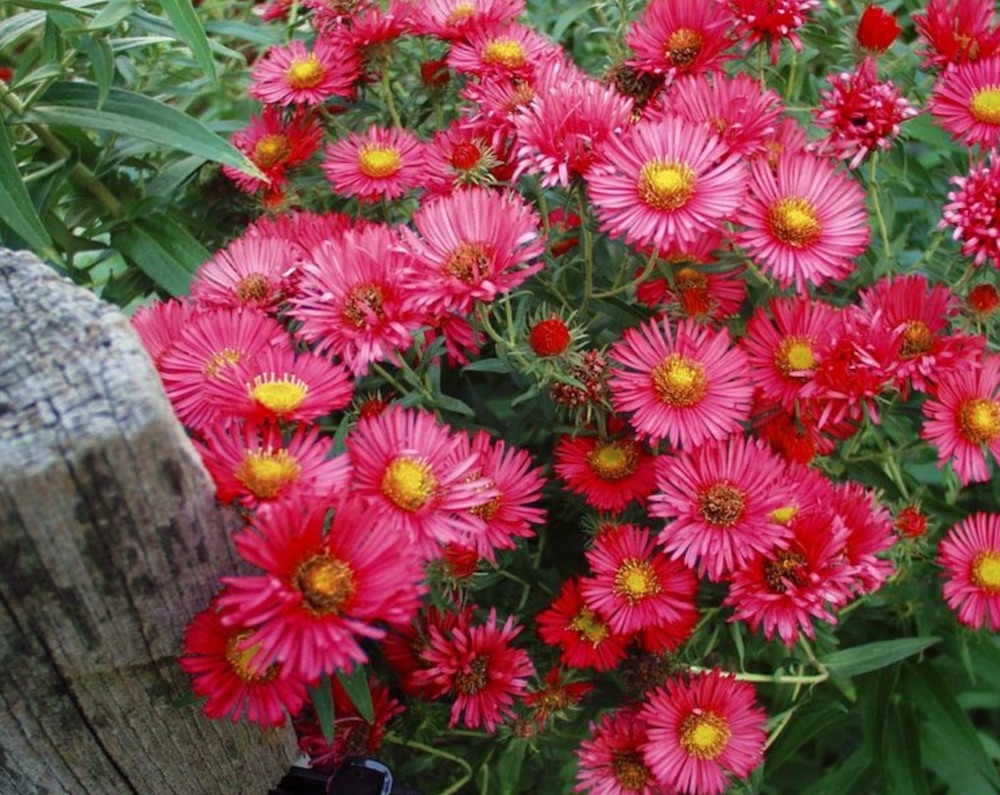
Blooms are a warm reddish-pink with yellow centers. Grows in zones 3 to 8 in mostly sunny to full Sun gardens. Reaches 36 inches tall. Red blooms appear in late Summer through late Fall. Beneficial for pollinators and attracts butterflies. Tolerates normal and clay soil conditions. Alma Potschke can be used in floral arrangements as well.
10. Hemerocallis – Plants that Thrive in Clay Soil
Hemerocallis are also known as daylilies. Summer blooming in a wide variety of colors. A cold hardy perennial with low maintenance and drought tolerant once established.
Hemerocallis Diva’s Choice
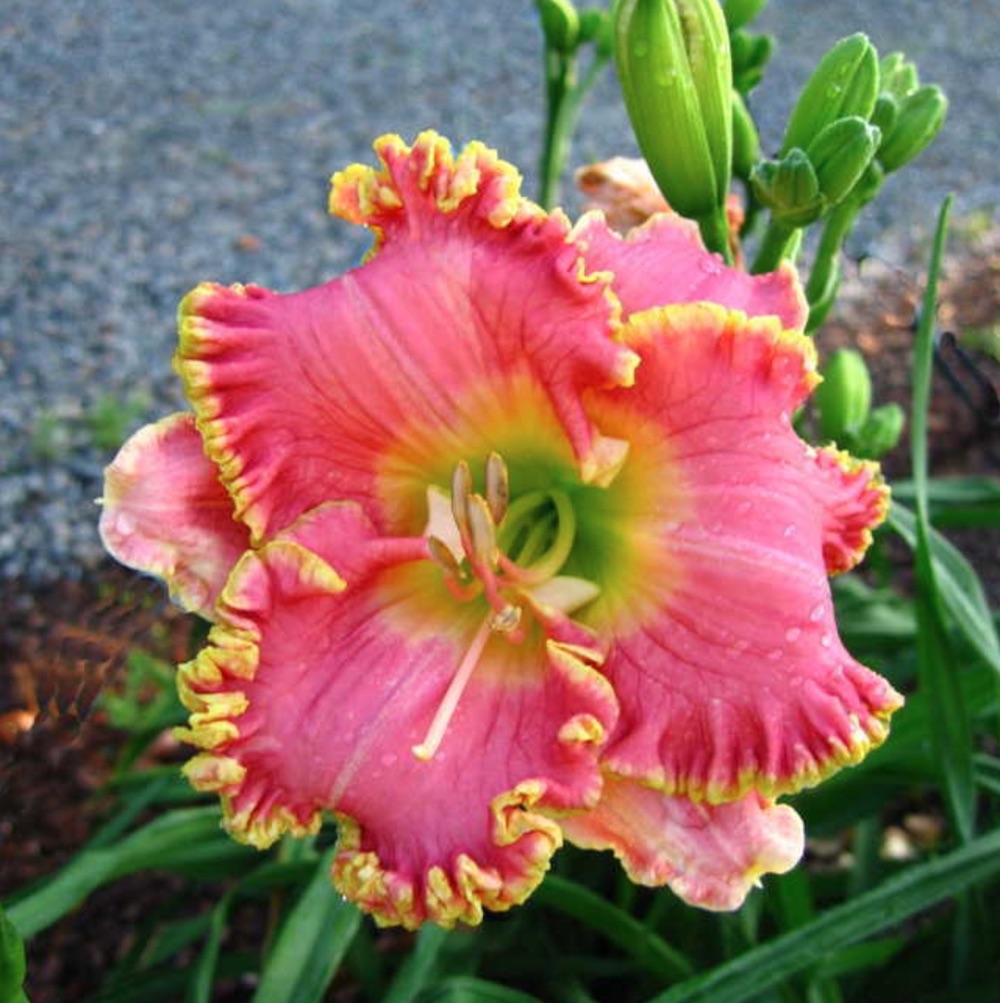
A daylily with blooms of light red, pink, rose, and yellow. Hemerocallis Diva’s Choice is a repeat bloomer of bubble gum-pink flowers. Grows in zones 3 to 9 in part shade and part Sun to full Sun. Reaches 22 to 26 inches tall. Hemerocallis has big 6-inch blooms. Tolerates normal, poor, or clay soil conditions. Cold hardy perennial that is resistant to deer, disease, and pests. Tolerant of heat, humidity, and drought conditions, once established.
Adorable Tiger Hemerocallis
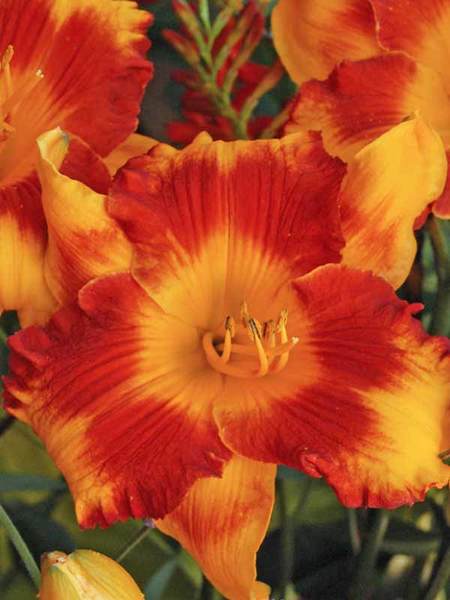
Large copper-red eye with sunny golden-yellow flowers that are fragrant. Adorable Tiger Hemerocallis has ruffled edges with red tiger stripes. Grows in zones 3 to 9 in mostly Sunny to full Sun gardens. Reaches 26 inches tall. Fragrant blooms are yellow with copper accents that appear in early to mid Summer. Attracts butterflies and hummingbirds. Tolerates normal, acidic, or clay soil conditions. Resistant to rabbits. Tolerant of hot dry site and seaside/salt garden conditions.
11. Sedum
Sedum is also known as Upright Stonecrop, Stonecrop, or Hylotelephium. Foliage varies in shapes and sizes in growing habits from upright to ground covers. Full Sun loving with many color ranges.
Cherry Truffle Sedum

Upright foliage in shades of purple, green, and amber that transitions to frosted plum-purple then glossy chocolate. Crowns of warm pink flowers appear in Summer. Cherry Truffle Sedum grows in zones 4 to 9 in mostly sunny to full Sun garden areas. Reaches 16 to 18 inches tall. Pink blooms from late Summer through early Fall. Tolerates normal, sandy, or clay soil conditions. Beneficial for pollinators and attracts bees, moths and butterflies. Resistant to rabbits. Tolerant of hot dry site and seaside salt conditions. Dried flower heads provide food for the birds. Drought tolerant due to the succulent leaves retaining water.
Pink Bomb Sedum
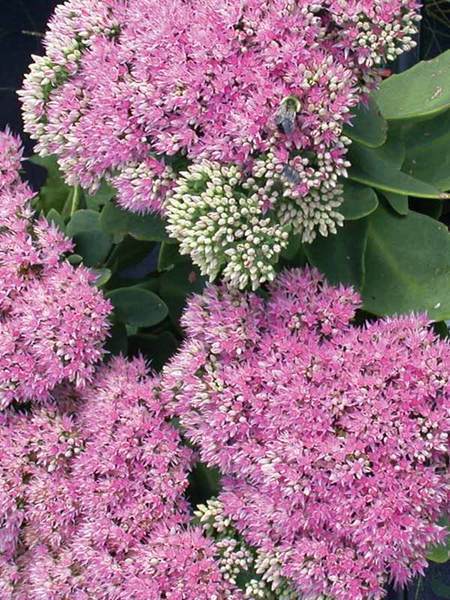
Striking starry pink flowers pop open on succulent cupped blue-green compact foliage. Pink Bomb Sedum is long flowering. Grows in zones 3 to 10 in mostly sunny to full Sun gardens. Reaches 10 to 12 inches tall. Pink blooms appear from late Summer to late Fall. Tolerates normal, sandy, or clay soil conditions. Beneficial for pollinators and attracts butterflies. Resistant to rabbits. Tolerant of hot dry site and seaside salt conditions.
12. Miscanthus – Plants that Thrive in Clay Soil
Miscanthus are also known as ornamental grasses. Available in various sizes, Miscanthus are dwarf to mid-size to large grass varieties. Sun loving perennials.
Morning Light Miscanthus Grass
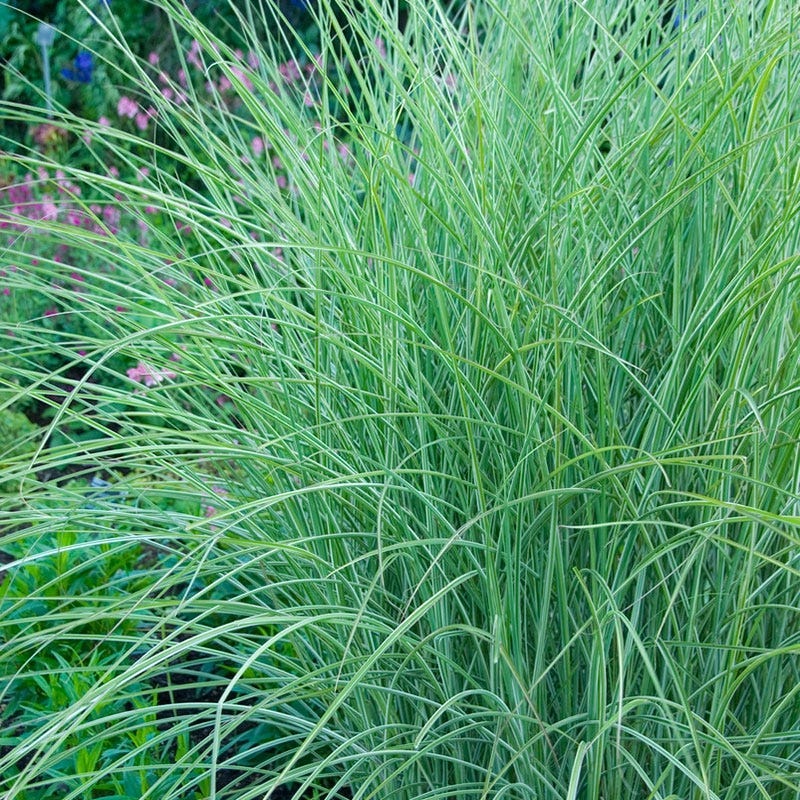
Morning Light has fine arching white and green variegated leaves for a silvery appearance. In late Summer to Fall, wheat colored flowers appear that dry to a creamy white color. Grows in zones 5 to 9 in part Sun and part shade to full Sun. Reaches 48 to 72 inches tall. Tolerates sandy, loamy, clay, and drought/dry conditions once established. Attract birds and is resistant to deer. Plant for erosion control.
Blue Paradise Schizachyrium
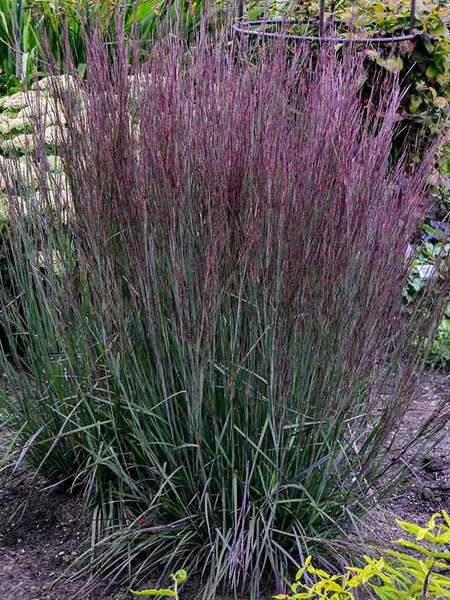
Blue Paradise Schizachyrium is also known Little Bluestem and Bluestem. Stems are silvery blue. Grows in zones 3 to 9 in mostly sunny to full Sun. Reaches 36 to 42 inches tall. Tiny seed heads appear in the Fall. Blooms early to late Fall. Tolerates normal, or clay soil conditions. Resistant to deer. Tolerant of hot dry site, humidity, and seaside/salt conditions.
13. Heuchera
Heuchera is also known as coral bells and alum root. Coral bells comes in a range of foliage colors such as green to chartreuse, deep purple to salmon and deep deep reds. In warmer climates Heuchera can be evergreen. Perfect for shady or semi-shade to full Sun garden areas. Use as garden edgers that have dainty flowers aloft airy stems.
Magma Heuchera
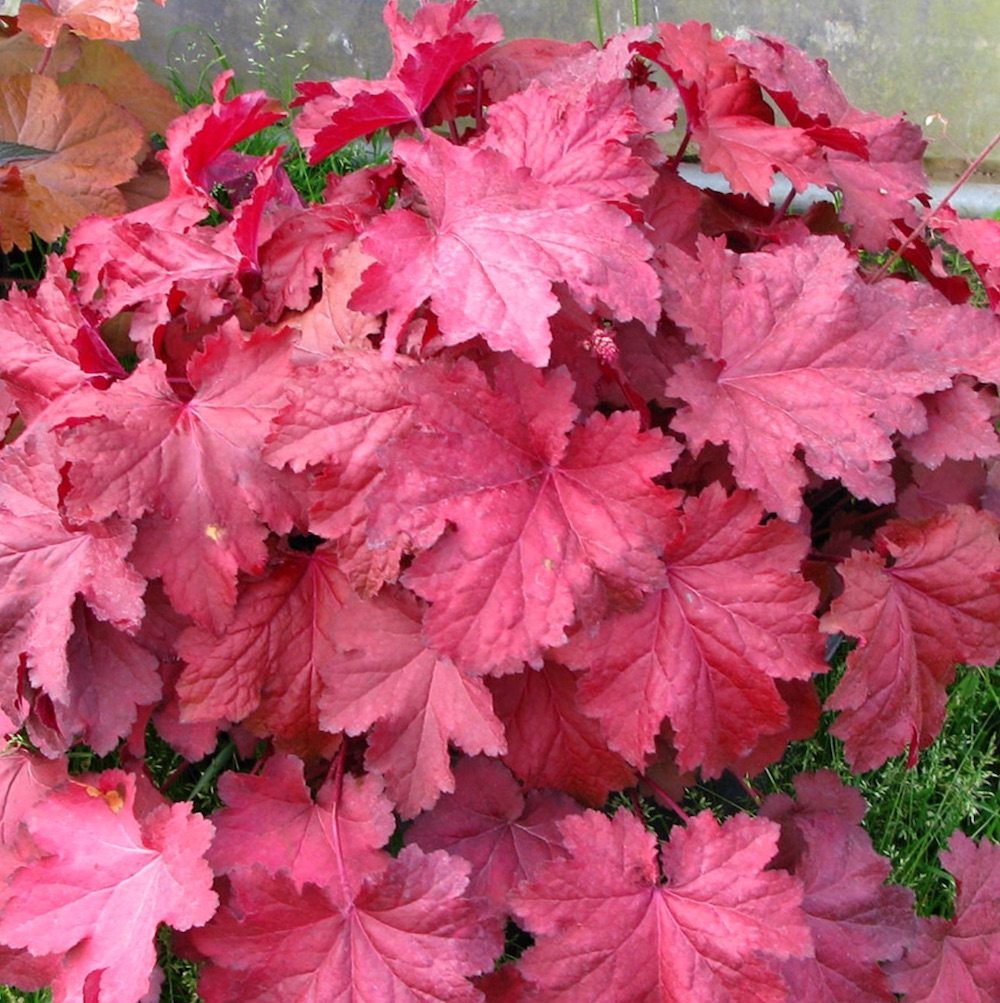
8 inch pinkish-purple leaves with a silvery sheen appear in mid-Spring. Magma Heuchera has clusters of pink blooms in the early Summer. Grows in zones 4 to 9 in part shade and part Sun to full Sun. Reaches about 14 inches tall and up to 24 inches wide. Tolerates normal, poor, sandy, or clay soil conditions. Resistant to deer, disease, and pests. Tolerant of heat, humidity, and drought conditions once established.
Sweet Tart Heuchera
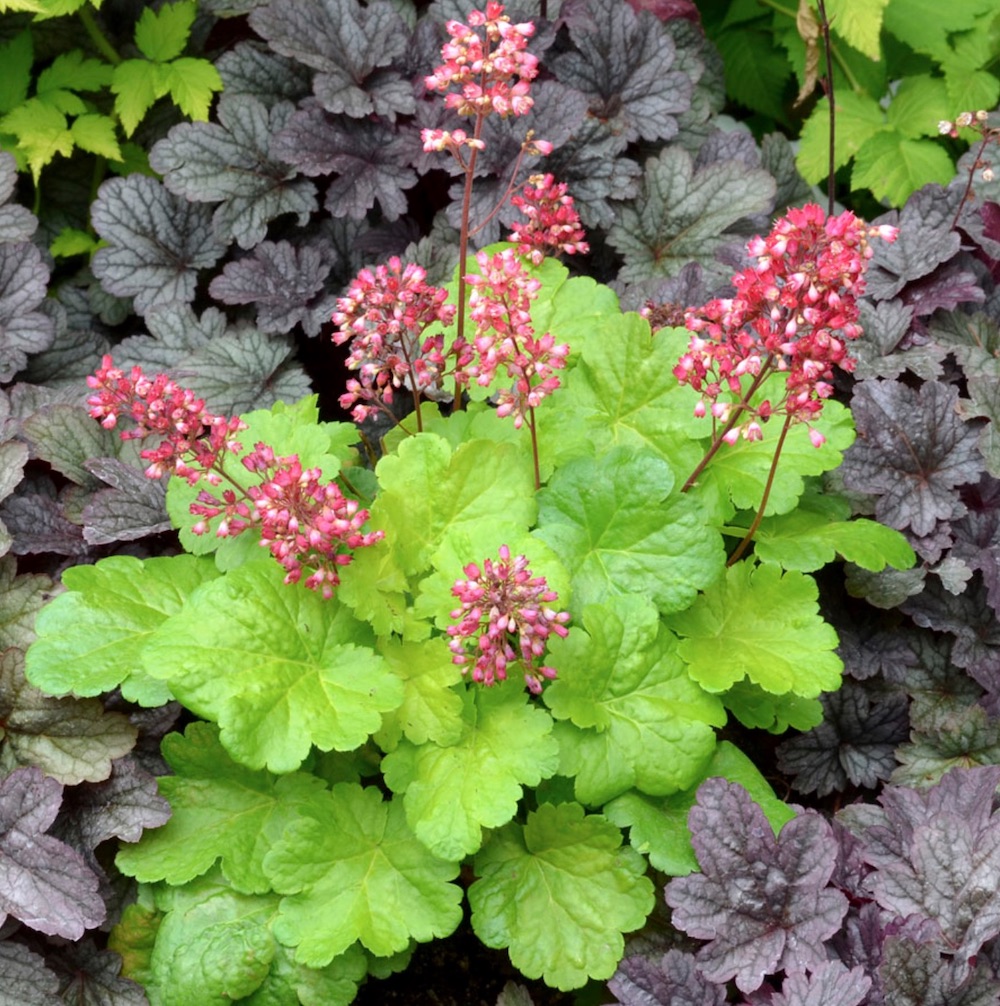
A petite perennial, Sweet Tart Heuchera with foliage of lime green in the Spring. Grows in zones 4 to 9 in full shade to part shade and part sun. Reaches 5 inches tall with an 8 inch spread. Foliage is chartreuse to light green with blooms of dark pink to light red. Attracts butterflies and hummingbirds. Tolerates normal, poor, or clay soil conditions. Cold hardy heuchera that is tolerant of heat, humidity, and drought conditions once established. Blooms from late Spring until midFall.
Georgia Peach Heuchera
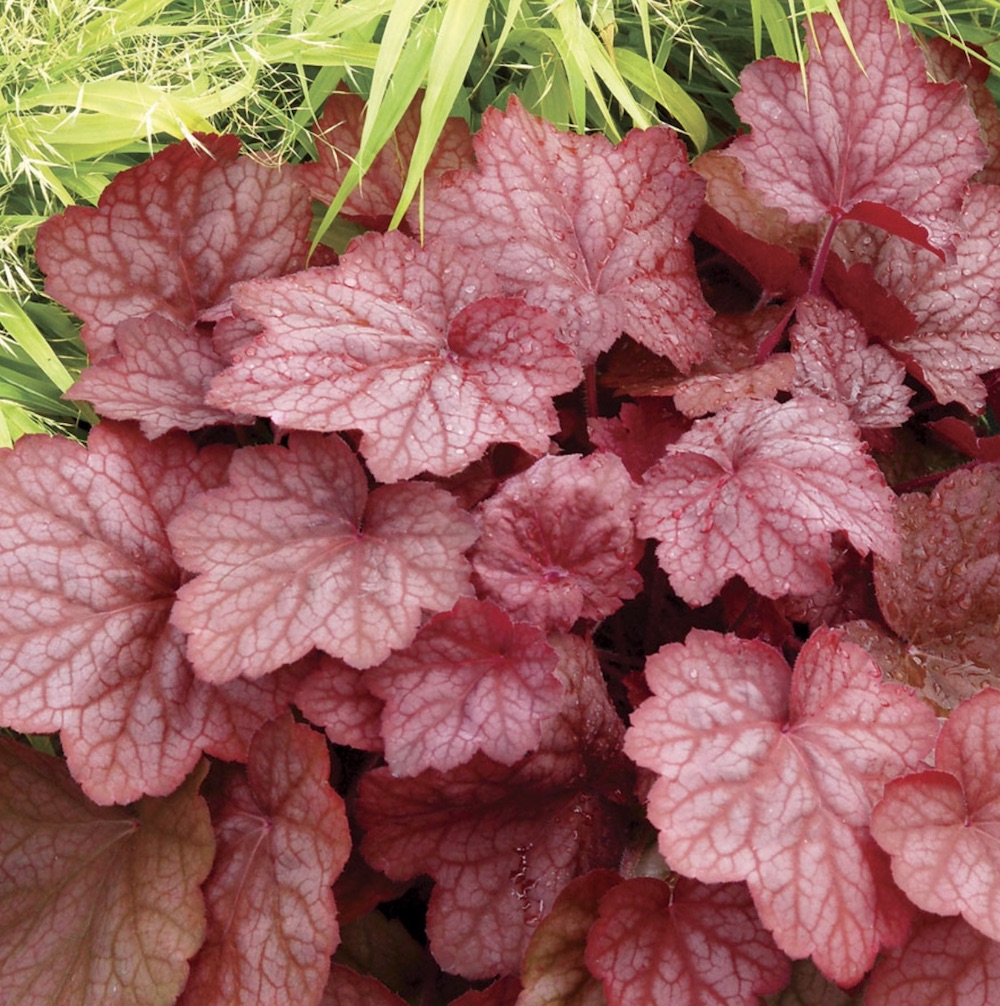
Foliage has giant rounded leaves in silvery peach color with deep rose tints and prominent veining. Georgia Peach Heuchera has cluster blooms of ivory on 30 inch stems. Grows in zones 4 to 9 in part shade and part Sun to full Sun. Reaches 14 inches tall. Attracts butterflies and hummingbirds. Tolerates normal, sandy, clay, or poor soil conditions. Resistant to deer. Cold hardy heuchera that is tolerant of heat, humidity, and drought conditions once established.
14. Astilbes
Astilbes is also known as Perennial Spirea. Ideal for gardens with filtered light from part shade to full shade. Astilbes blooms are textural plumes in a range of pinks, whites, purples, and red colors.
Rhythm and Blues Astilbe
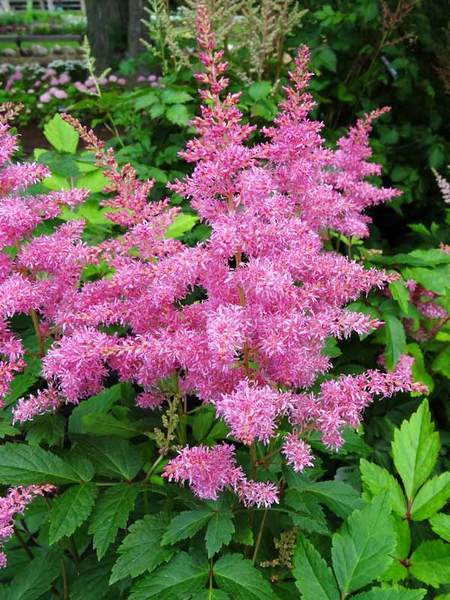
Raspberry-pink plumes appear from early to midSummer. Rhythm and Blues Astilbe grows in zones 4 to 8 in full shade to part shade and part sun. Reaches 24 to 28 inches tall. Pink blooms early to mid-Summer. Tolerates normal, acidic, or clay soil conditions. Attracts butterflies and hummingbirds. Resistant to rabbits and deer. Wet site tolerant.
Younique White Astilbe
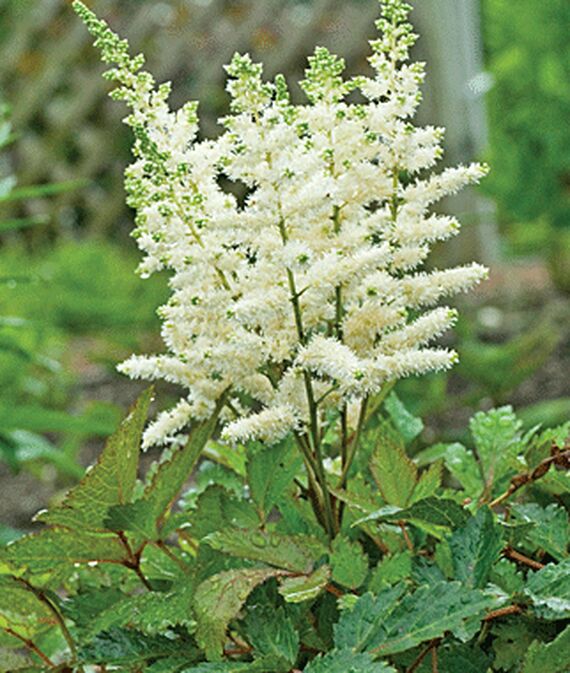
Soft feathery plumes of white appear on a compact Younique White Astilbe. Grows in zones 4 to 9 in full shade to part Sun and part shade. Reaches 16 to 20 inches tall. Blooms in the Summer. Resistant to rabbits and deer.
15. Hosta
Hosta plants are loved for their foliage colors and texture. They can be planted in gardens with light requirements of full shade to part shade to some Sun. Foliage colors range from green, blue-green, golden, chartreuse to variegated patterns. Flowers range from white to lavender colors.
Waterslide Shadowland Hosta
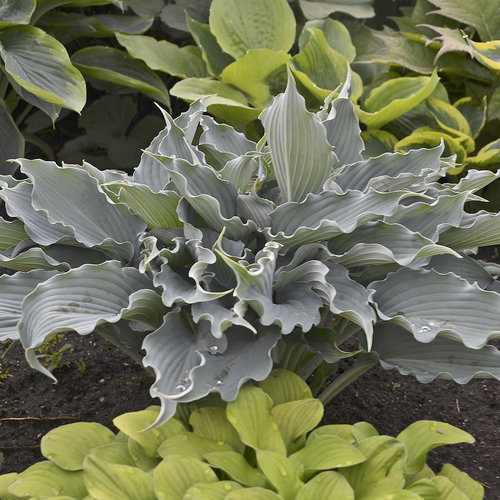
Foliage is blue ruffled leaves that hold their color all season long. Waterslide Shadowland Hosta grows in zones 4 to 9 in full shade to part shade and part Sun. Reaches 14 inches tall with a 32 inch spread. Lavender and purple blooms appear over the mid-Summer season. Attracts hummingbirds.
Rainforest Sunrise Hosta
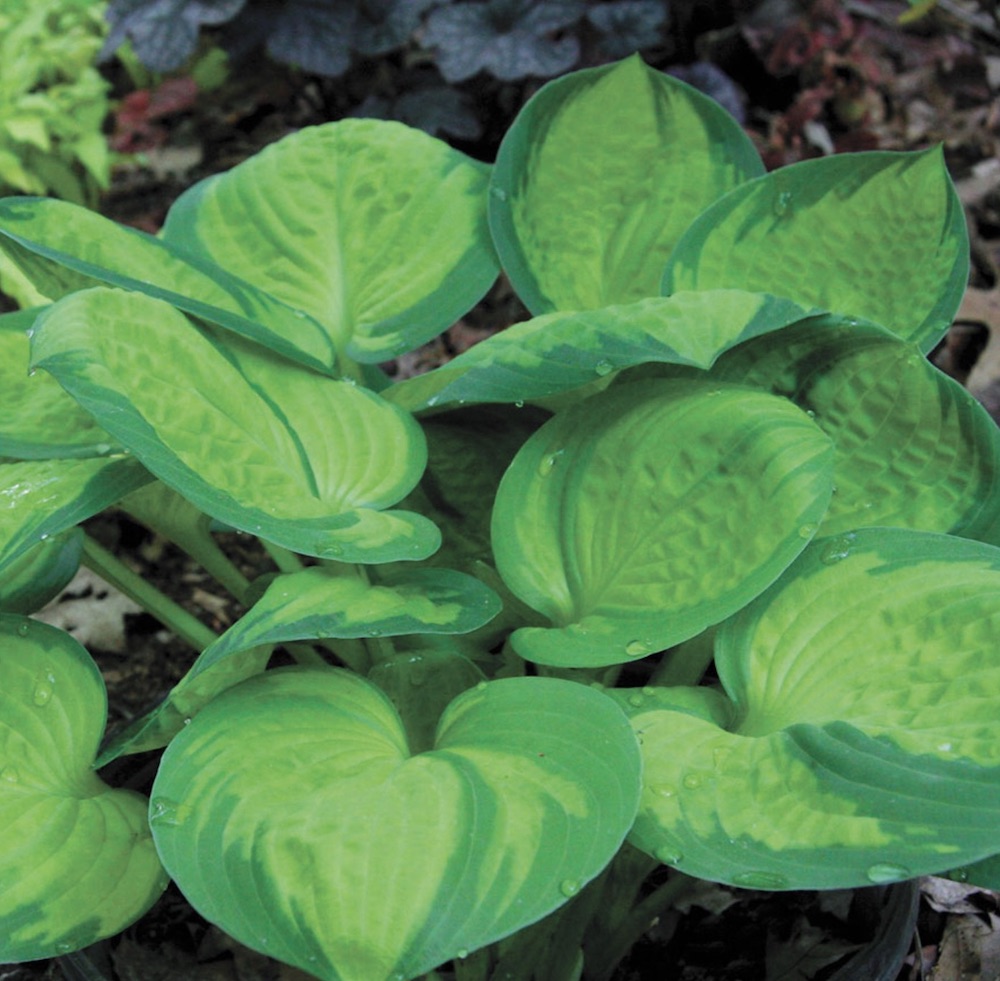
Brilliant green shades highlight the garden with Rainforest Sunrise Hosta. Lavender blooms appear over the midSummer months. Grows in zones 3 to 8 in part shade and part Sun. Reaches 8 inches tall with an 18 inch spread. Blooms in midSummer. Attracts butterflies and hummingbirds. Tolerates normal, poor, or clay soil conditions. Cold hardy perennial that is tolerant of heat, humidity, and drought tolerant once established.
Fire and Ice Hosta
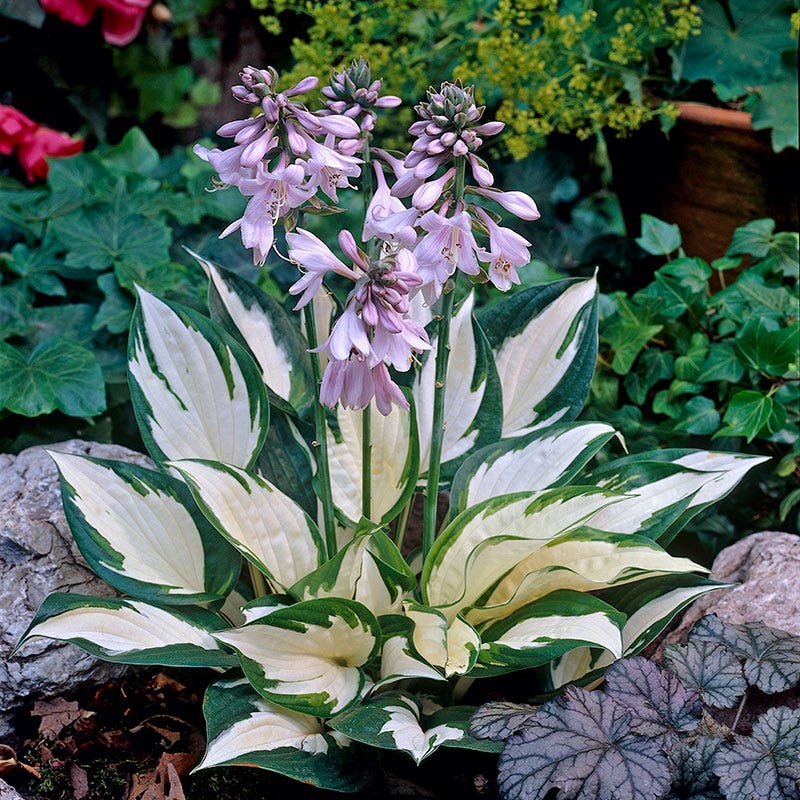
Leaves have white centers with wide dark green margin. A variegated plant, Fire and Ice Hosta has lavender purple blooms over the Summer months. Grows in zone 3 to 9 in full shade to part shade and part sun. Reaches 16 to 20 inches tall with a spread of 12 to 24 inches wide. Tolerates clay soil conditions.
16. Athyrium
Athyrium ferns among others, excel in clay soil conditions. Many ferns require shade however, there are some ferns that tolerate some Sun during the day.
Red Beauty Japanese Painted Fern
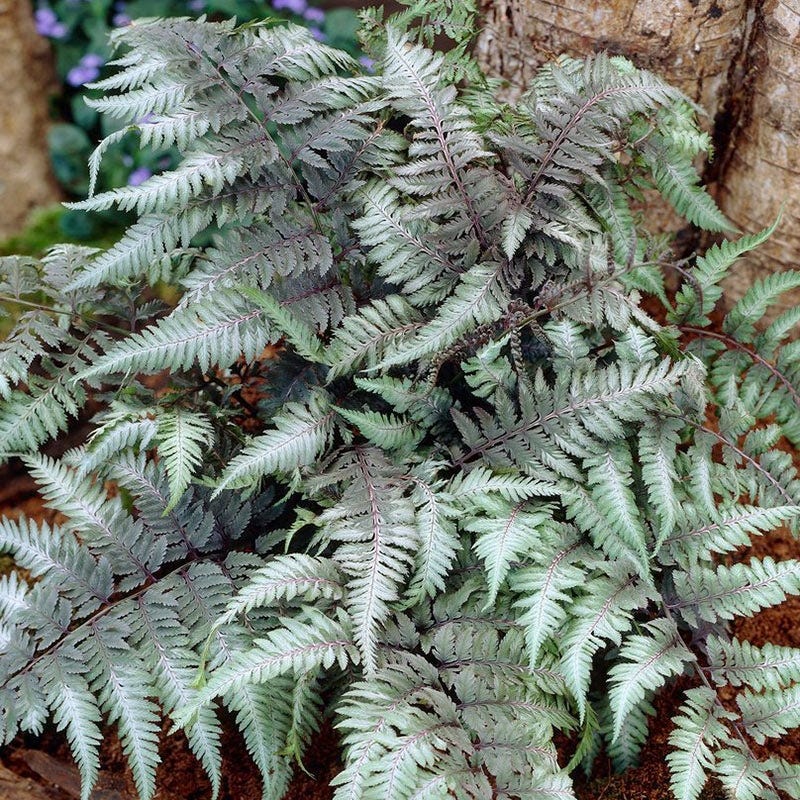
Gray green fronds with burgundy red stems and veins. And silver tinged green fronds. Red Beauty Japanese Painted Fern has burgundy highlights with a spicy fragrance. Grows in zones 4 to 9 in full shade to part shade and part Sun. Reaches 12 to 18 inches tall and wide. Tolerates clay soil conditions. Resistant to deer and rabbits.
Regal Red Japanese Painted Fern
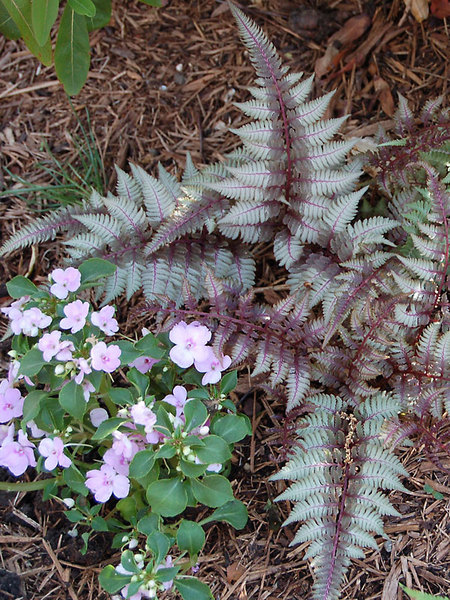
Frost colored fronds with striking red burgundy stems and ribs. A striking Regal Red Japanese Painted Fern brightens shady garden areas. Grows in zones 3 to 8 in full shade to mostly Sunny. Reaches 12 to 18 inches tall. Both deer and rabbit resistant. Tolerant of dry shade, shade, and wet site garden conditions. Plant on a slope or bank.
There are many challenges to working with clay soil. It is heavy and cumbersome to break into. Adding organic matter or compost to the soil will help to loosen the soil and begin to make it more manageable. Or adding garden gypsum to the soil is another method for breaking down the clay soil. Beginning with plants that thrive in clay soils is a good start for taming a clay soil garden bed.
This completes our list of the plants that thrive in clay soils. There are many to select from. Be sure to check with your local garden center for additional plants that perform well in clay soil.
Interested in gardening? If you found this helpful . . .
You May Also Enjoy some of our other gardening related posts.
Plants that Thrive in Acidic Soils
15 Best Flowering Ground Covers for Sun
8 Most Popular Hydrangeas that Gardeners Love
And if you have any questions, feel free to reach out to us. We always are ready to help you out. Thank you for dropping by.
Mary

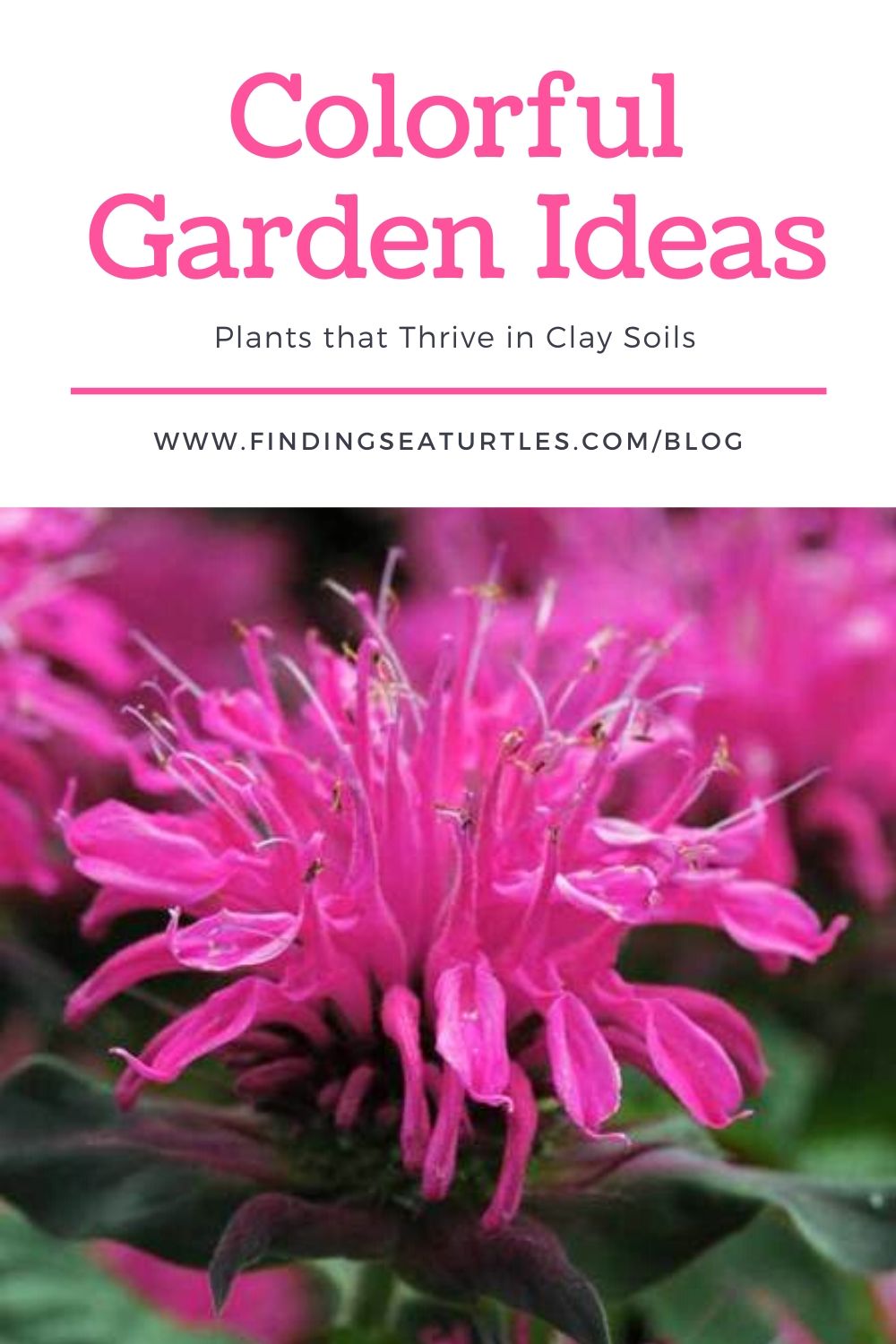
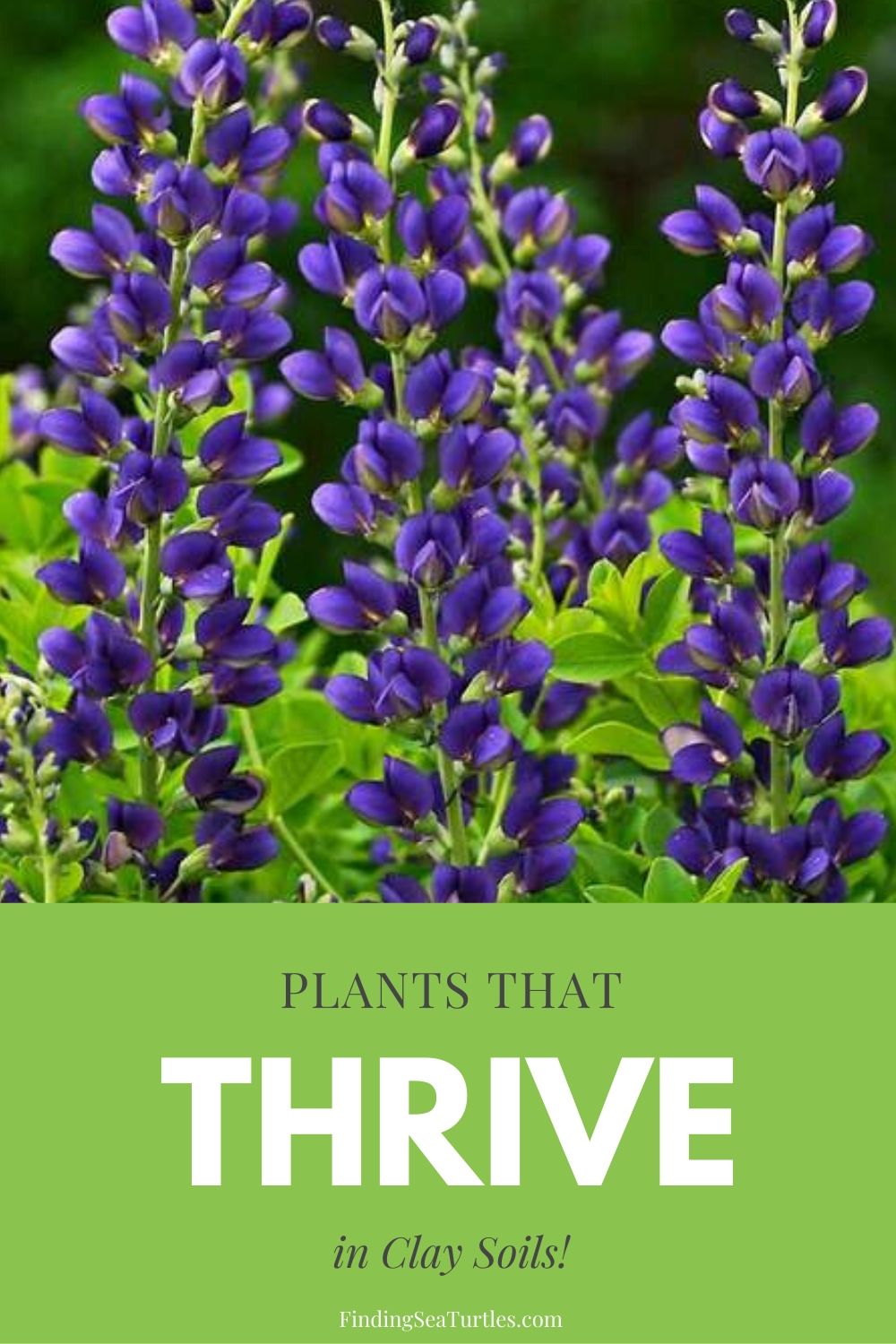
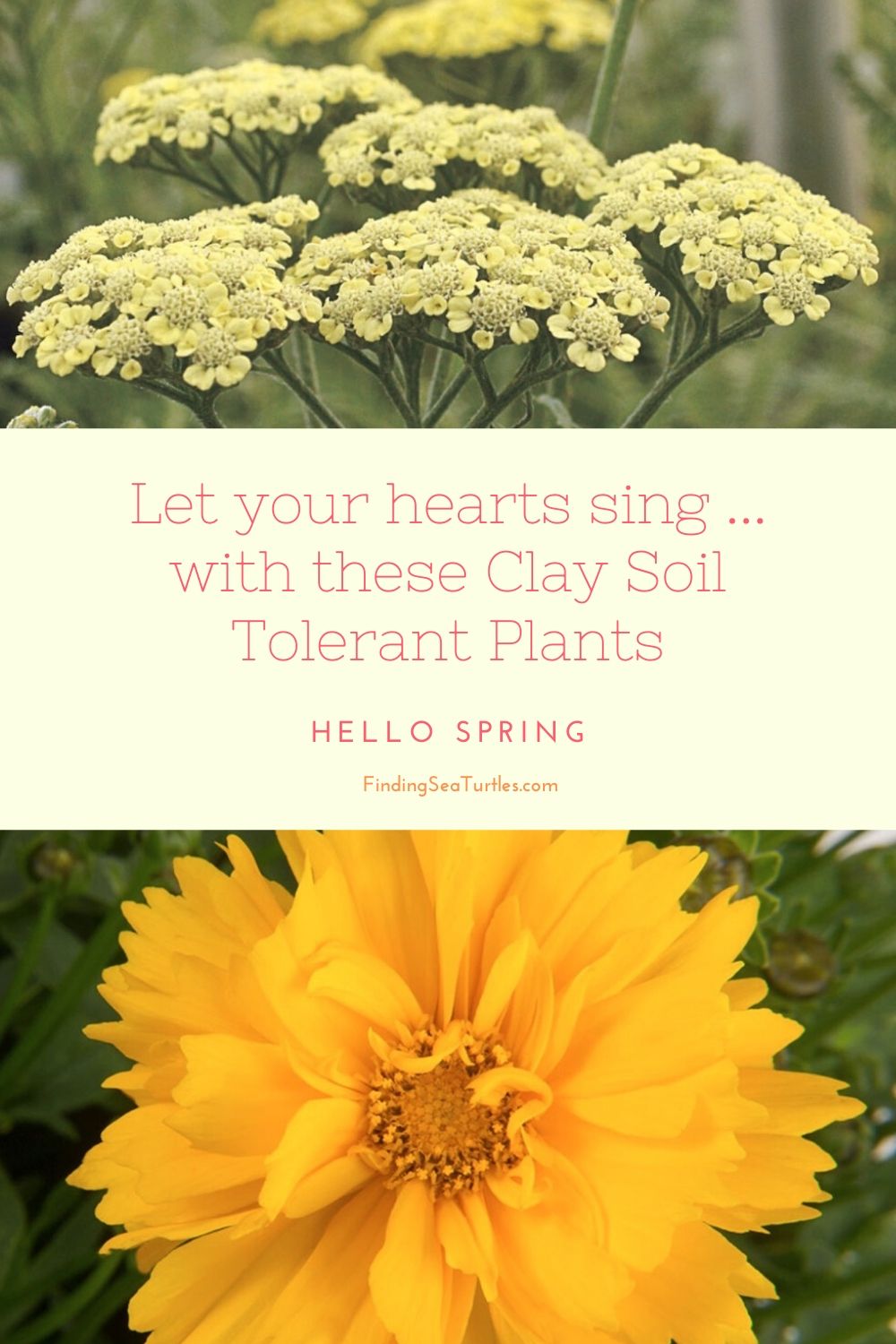
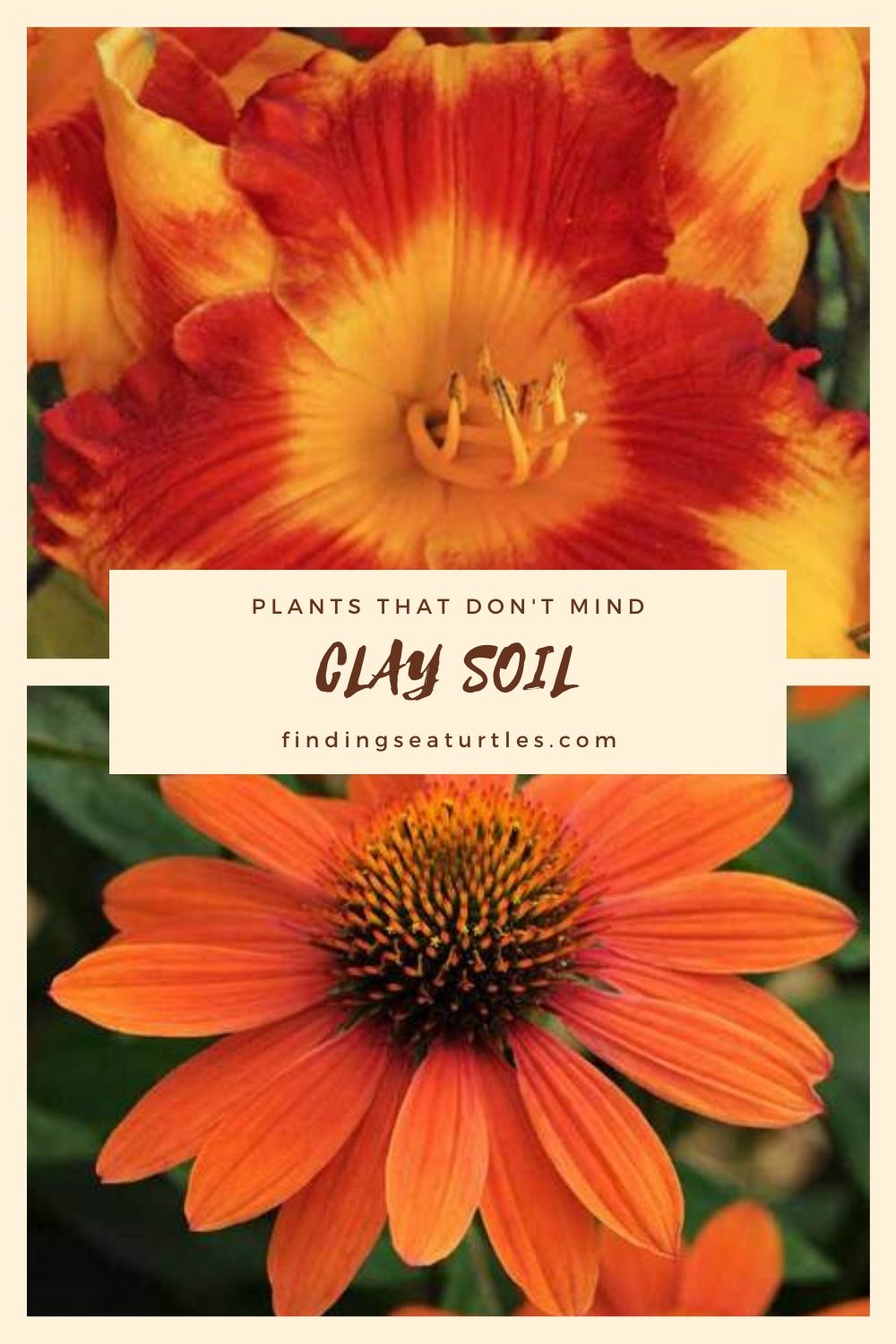
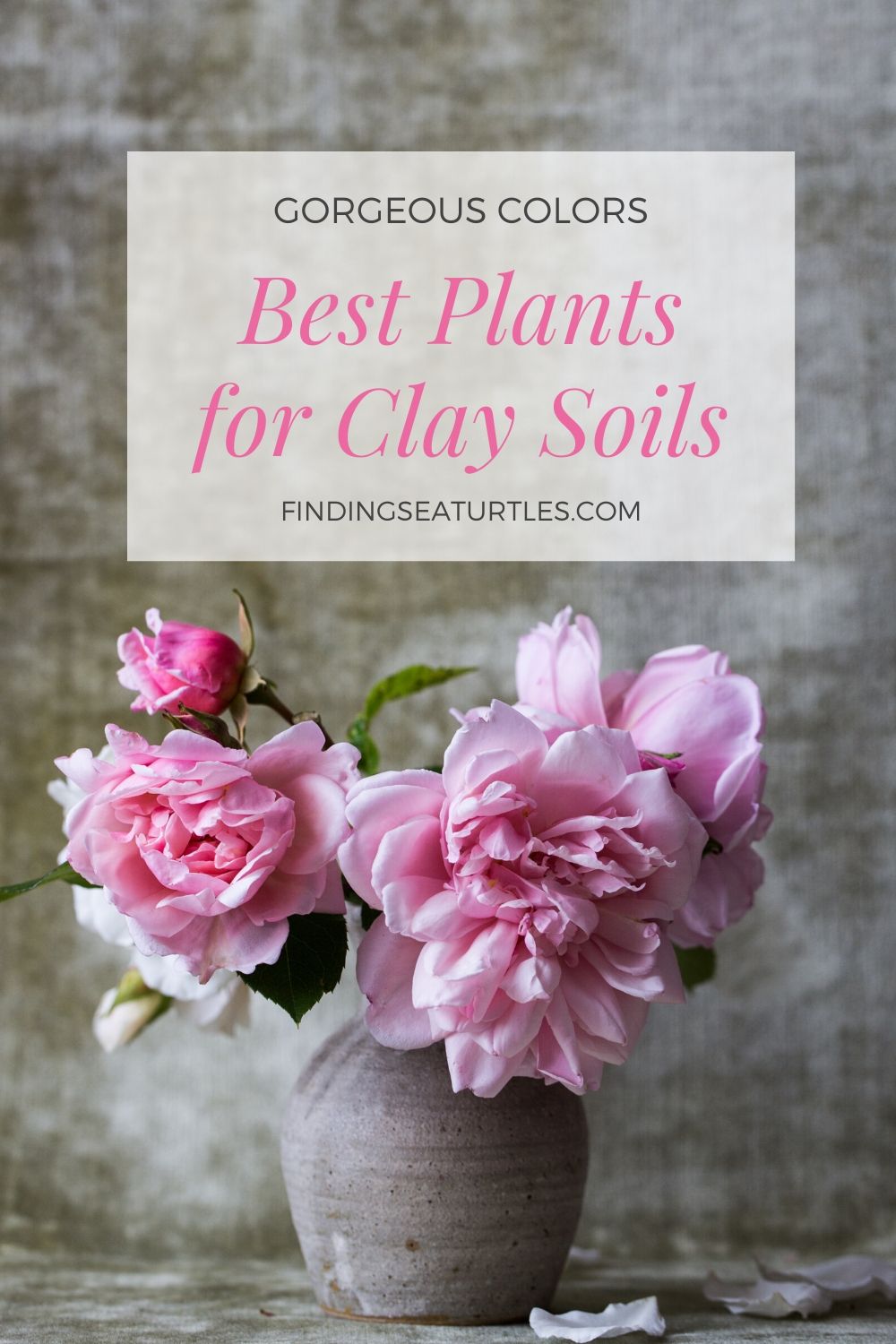
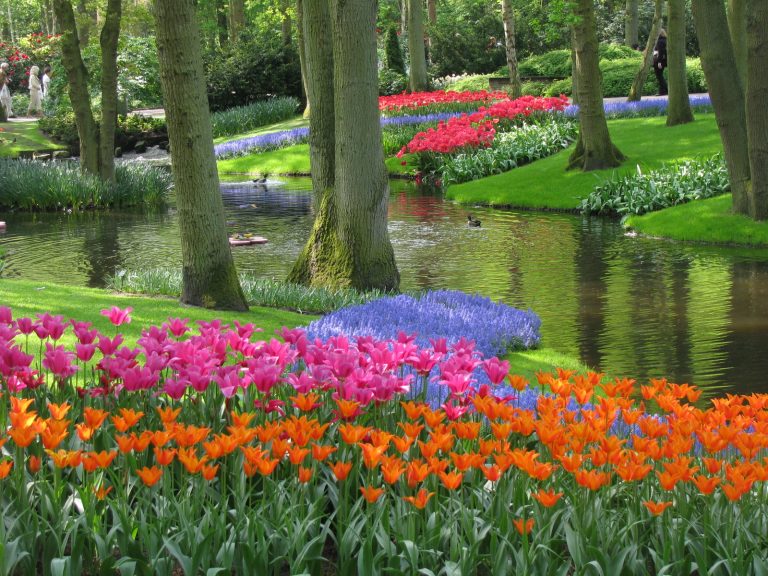
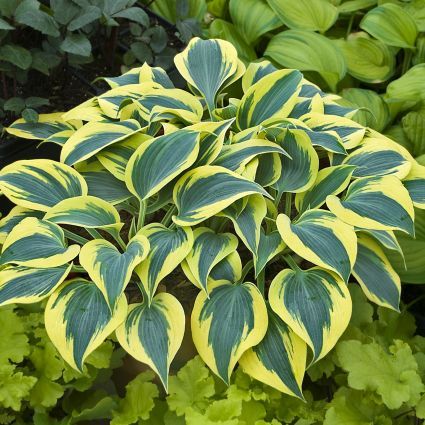
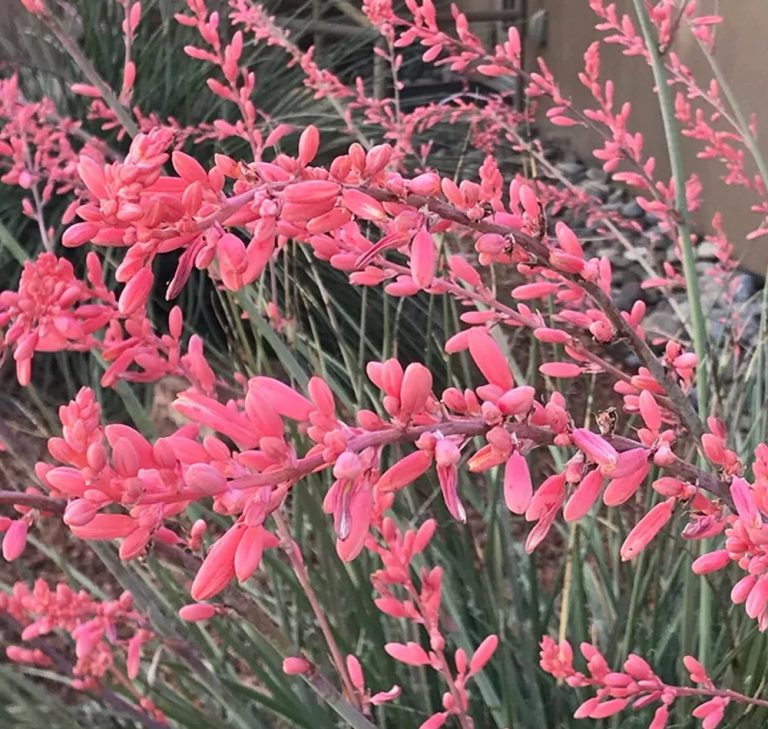

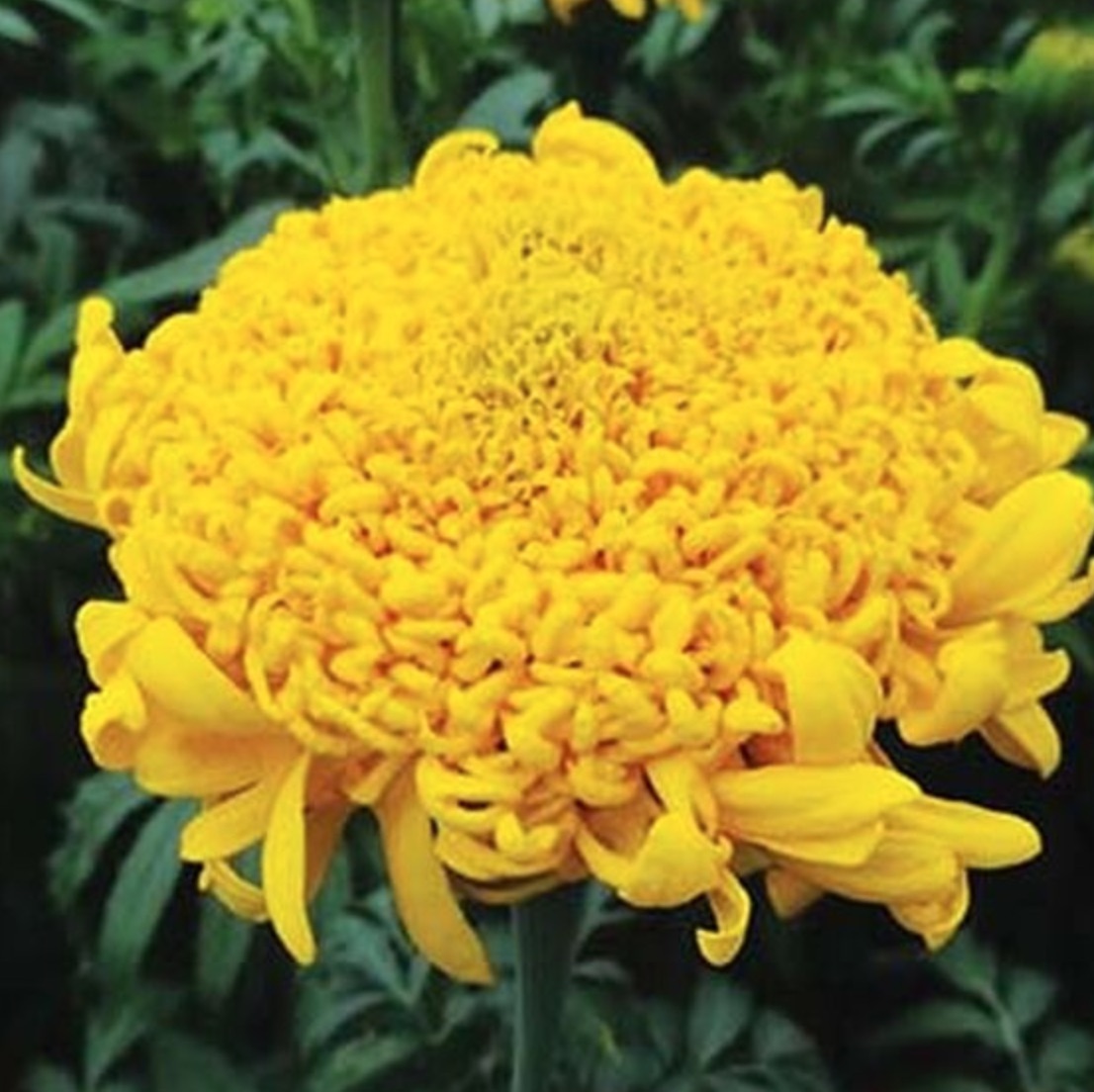
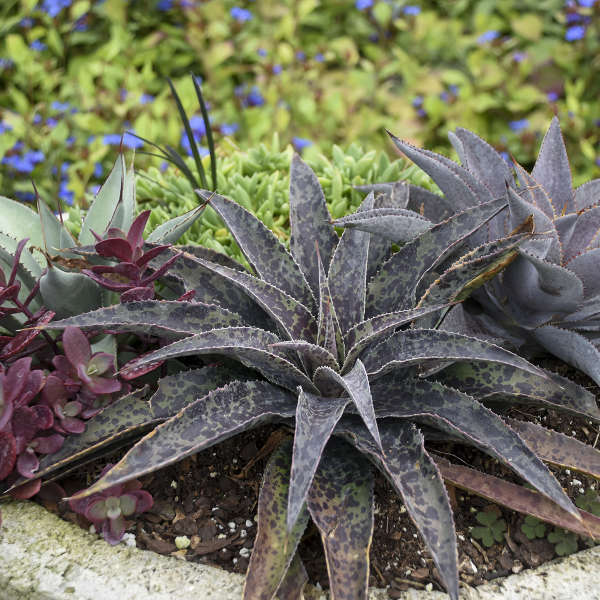
I’d like to see and read about some of the huge / gigantic beautiful tulips like I’ve seen at Botanical gardens.